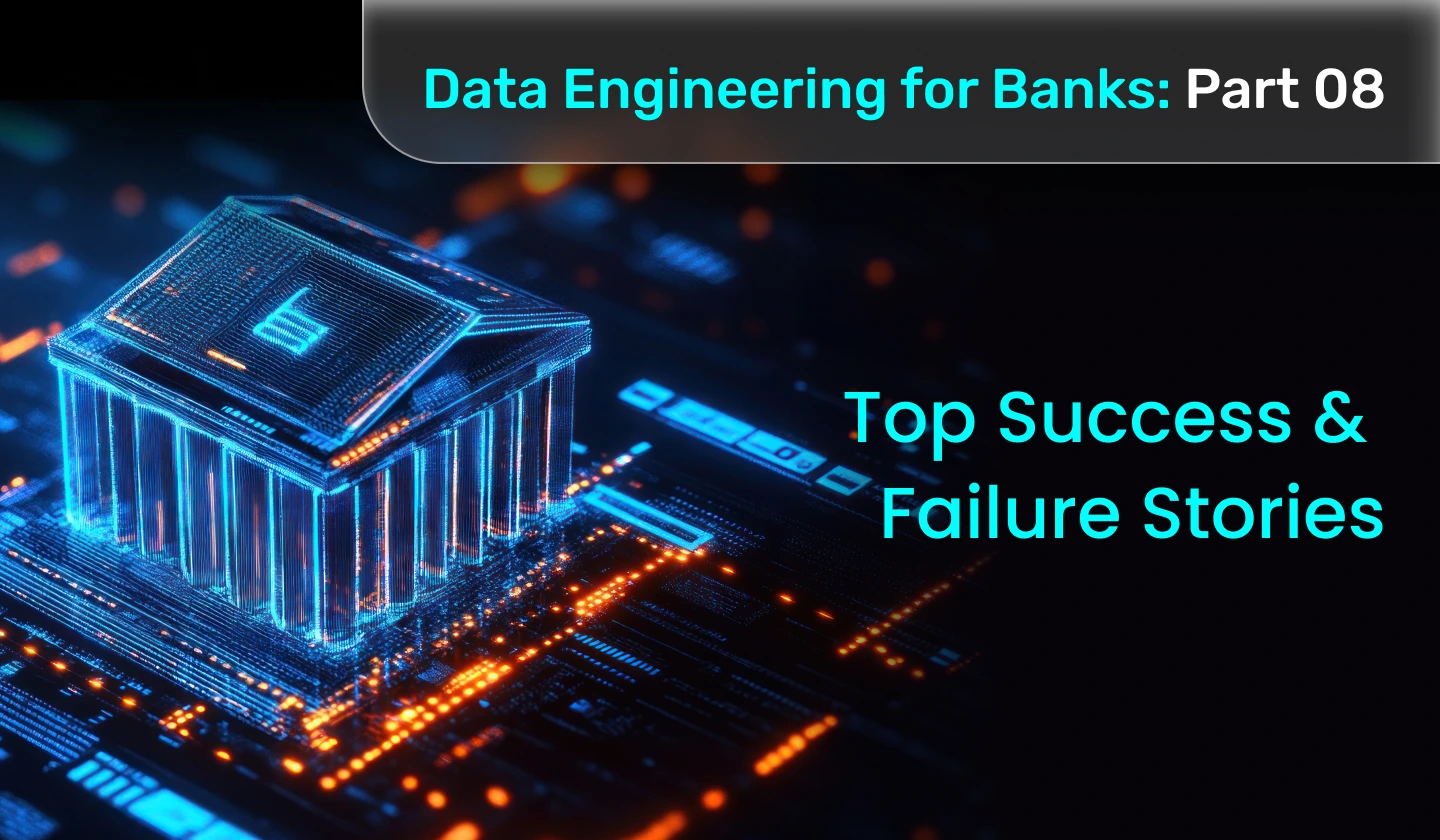Welcome to the last blog of our Data Engineering for Banks series!
Over the past few blogs, we’ve explored the tools, technologies, and strategies banks across Europe use to bring the most out of data.
If you haven’t caught up yet, here are the links to our previous posts:
→ Why EU Banks Need Stronger Data Engineering
→ Data Engineering Starts with a Data Assessment
→ Designing a Robust Data Architecture for Banking
→ Data Quality and Cleaning in Banking
→ Best Practices for Data Integration and ETL Pipelines
→ Using Agentic AI & Advanced Analytics on Engineered Data
→ Governance, Automation, and Future Trends
In this concluding blog, we’ll focus on real-world success and failure stories to highlight lessons learned and the evolving role of data engineering in the banking sector.



 11 mins
11 mins











 Talk to Our
Consultants
Talk to Our
Consultants Chat with
Our Experts
Chat with
Our Experts Write us
an Email
Write us
an Email





